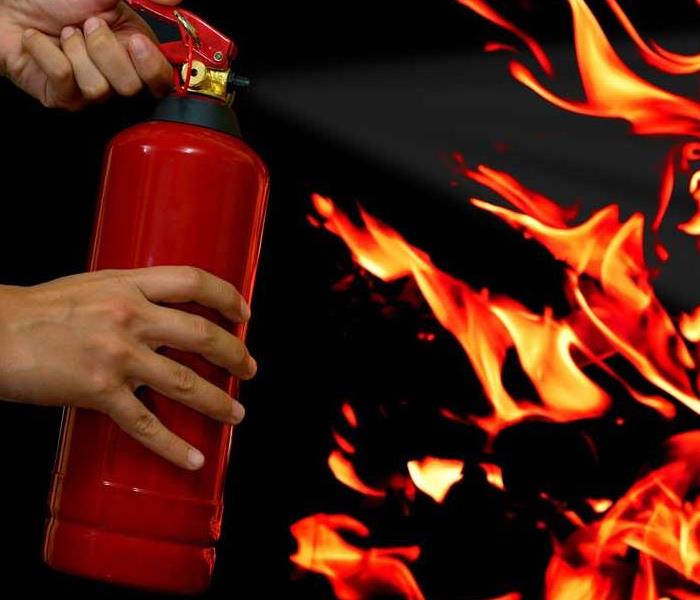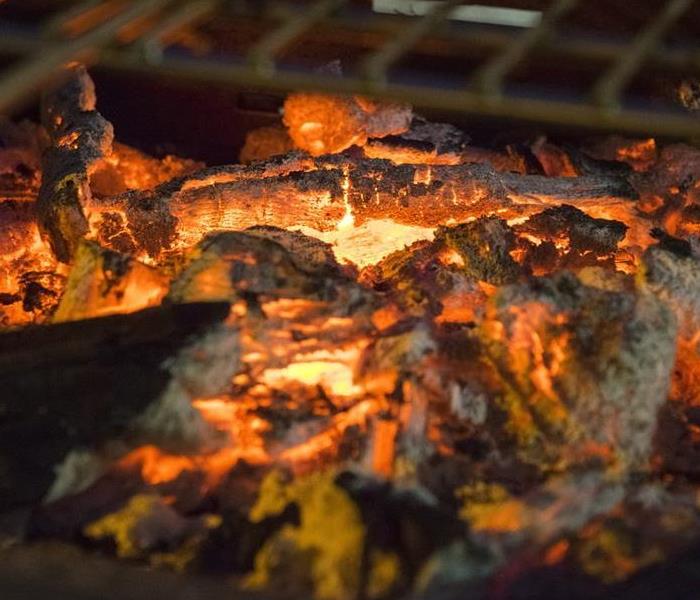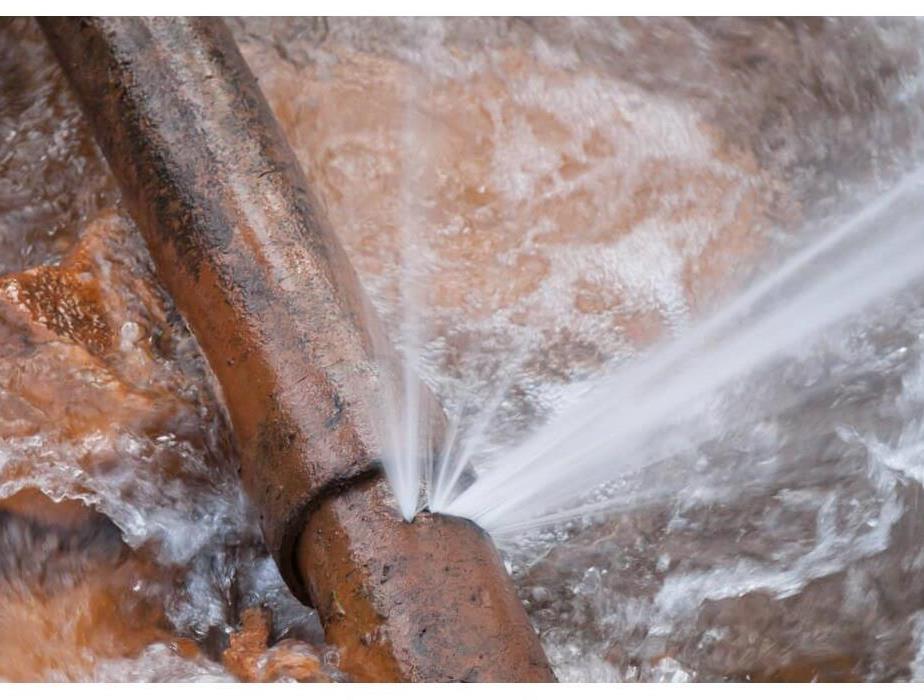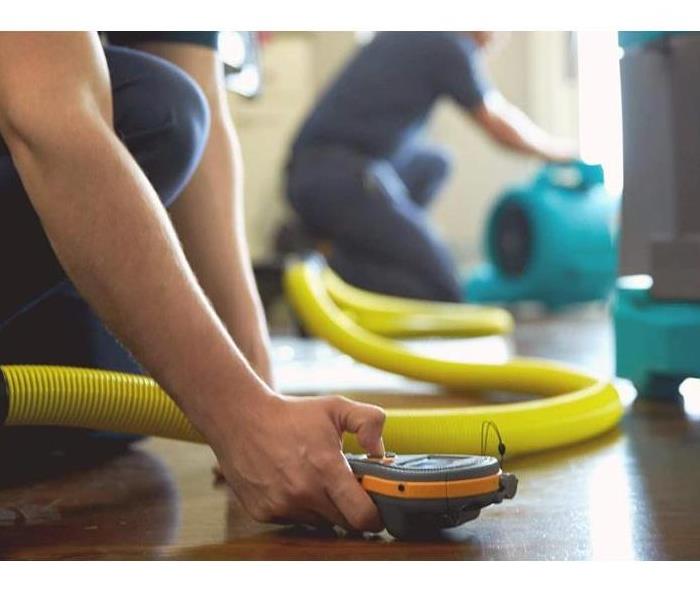Recent Blog Posts
What Cause Home Fires? Unclean Grills
8/26/2024 (Permalink)
Nothing says summer like the smell of your favorite foods on the grill. When the temperatures climb, it may feel easier to take dinner prep outdoors rather than sweat over a hot stove. However, it's important to clean your grill every time you use it. Not only does this prolong the life of the appliance, but it protects your home from fires as well.
In a survey between 2014-2018, over 10,600 home fires were linked to grills and barbecues. A buildup of oil and grease makes your grill more susceptible to putting up large flames that can catch onto porches, roofs, and dry grass. Proper grill maintenance is essential for keeping your favorite summer activity safe.
- Clean the Grates
Proper grill cleaning after every meal makes maintenance much easier. For either a gas or charcoal grill, scrub the grates while they're still hot and before the food particles stick too badly.
Some people like wire brushes, though balled-up aluminum foil also works and won't leave little bristles behind.
- Check for Grease or Ashes
Avoiding grease fires is a top priority with gas grills. Before you turn on the grill, check the grease tray. If it gets overfilled, you'll be cleaning grease spots off your patio.
Similarly, always dispose of all completely cooled ashes from your charcoal barbecue.
- Deep Clean Annually
When the grilling season ends, deep grill cleaning saves your grill and prevents problems next season. Kicking off the season the next year with a fire due to an improperly maintained grill can put a major damper on your next barbecue. - Know Grease Fire Safety
Educate yourself on how to extinguish a fire in your grill. Never use water, as water can actually make a grease fire worse. Closing the lid is a good first step because it stops oxygen flow to the flames.
If you do have a home fire, a local fire restoration company can help with repairs.
Enjoy the grilling season to the fullest by practicing good grill cleaning habits to protect your home and your dinner.
How To Handle a Broken Pipe in Your Home
8/26/2024 (Permalink)
Bursting pipes can really throw a wrench in the works of the day-to-day routine of running your household. The disruption can be a great concern and understanding what needs to be done can be of great help.
In the event of bursting pipes, swift and thorough treatment at the first sign of water can help minimize secondary damage. This type of damage is typified by the water beginning to become contaminated, for one thing. The following are some additional indicators.
- Hardwood or subfloor that has buckled
- Swollen and rotting sheet rock
- Vinyl flooring that has begun to flake
- Sour or disagreeable odors coming from the water
- Black mold or evidence of spores
Cleaning Up Before Secondary Damage Happens
Secondary damage can come from allowing water to sit, even clean water. The water and the humidity that comes from it causes these problems. The water should be shut off and extracted immediately so that it does not stagnate. Fix the broken pipe and consider calling on water remediation and restoration professionals like SERVPRO® who can help with assessing the damage and making critical decisions.
Preventing Black Mold
The number one thing that can help prevent the onset of black mold is to thoroughly dry out the area. This includes drying out behind the walls, including studs and insulation if they have gotten wet. Industrial fans may be needed to do a good job of drying, and a dehumidifying unit is also helpful in controlling residual moisture.
If you should experience bursting pipes in your home, get the problem taken care of immediately. A dryer house is a safer house and will help to set your mind at ease.
Storm Safety Tips
8/7/2024 (Permalink)
Depending on the season and your location, your business may be vulnerable to damage from intense rain storms, tornadoes or hurricanes. Following several key safety guidelines can help you protect your building and safeguard the wellbeing of your staff.
- Keep Trees Trimmed
Tree branches can become dangerous objects during strong winds. To minimize the risks of broken windows and roof damage, you should keep trees adjacent to your property neatly trimmed and routinely remove dead branches.
- Stay Away From Windows and Skylights
Flying debris can easily shatter windows and skylights. As a precaution, everyone should move away from these structures during a severe storm with high winds or hail.
- Elevate Essential Equipment
A significant rain storm can increase the risk of flooding. If floodwaters enter your building, essential equipment, including components of your HVAC system, may be vulnerable to water damage. To alleviate this concern, you should elevate important devices off the floor.
- Move to an Internal Room
In the event of a tornado, seeking adequate shelter is essential. Your staff should promptly move to the basement or a windowless, interior room on the lowest level of the building.
- Avoid Using Electronic Equipment
Because cords conduct electricity, using electronic equipment during a thunderstorm can be dangerous. Staff should shutdown computers and avoid using phones until the storm has passed. As an added precaution, you should utilize surge protectors to safeguard vital equipment from potential damage.
- Inspect Your Roof
Hail and strong winds can wreak havoc on your building’s roof and cause damage that may lead to destructive leaks and potential mold contamination. For this reason, it’s a good idea to inspect your roof after any storm and promptly commence any necessary repairs.
A severe rainstorm can produce damaging high winds and cause extensive flooding. Taking proactive measures can help businesses avert serious injuries and minimize the risk of significant destruction.
What is Water Mitigation?
8/1/2024 (Permalink)
If you clicked on this blog, it is likely because you are seeking water mitigation services but need a better understanding of what it exactly is? Water mitigation is the process of reducing or preventing the damage caused by water after a leak, burst pipe, or flood.
The primary goal of water mitigation is to minimize the impact of water damage and prevent secondary issues such as mold growth. SERVPRO® specializes in water mitigation and uses advanced equipment to clean up water from your home or business.
SERVPRO follows significant steps for water mitigation. After we arrive and perform the initial assessment, our technicians:
- Remove Water and Dry It Out – using wet/dry vacuums, dehumidifiers, industrial fans, and other tools; we begin extracting water and increasing airflow to achieve optimum drying conditions.
- Thoroughly Inspect Damage – We look at any areas impacted by water, determining what can be restored and what must be replaced. This may involve inspection of flooring, wall cavities, belongings, electrical outlets, and more.
- Disinfection – After your home is free of water and drying wraps up, we thoroughly clean and disinfect all surfaces affected by water. Our Green Fleet comes stocked with a full selection of EPA-registered cleaning agents.
No stone must get left unturned when it comes to water mitigation, regardless of the event that caused the emergency. We feature highly-trained and certified technicians that know how to adapt to each situation to ensure the best results.
Our 24-hour emergency restoration services are here whenever you need them, which is the perfect way to restore your interior to pre preloss condition “Like it never even happened.”
Safety Tips In Case Of a Business Fire
5/20/2024 (Permalink)

As a business owner, the safety of your employees and everyone else in your building is in your hands. Are you prepared to respond quickly in the event of a business fire? Follow these safety tips to ensure that you can answer that question in the affirmative.
1. Safety Features
Your two main sources of protection during a fire are your fire suppression system and your fire extinguishers. Have your fire suppression system, including alarm panels, fire doors and sprinklers, inspected regularly. Make sure you have enough working fire extinguishers to place one at least every 75 feet and that they are mounted properly.
2. Fire Codes
Your building is bound by both state and federal fire codes. Exits must be properly marked and the pathways to them unobstructed. Electrical plates must be used to cover all wiring so that none of it is exposed. Comply with all laws and make immediate changes when mandated by fire marshals.
3. Material Labeling
All potentially hazardous or flammable material must be stored properly. It is also essential to label liquids that could easily contribute to a business fire so that anyone who sees them knows what they are.
4. Evacuation Plan
Before firefighters can put out the fire and fire damage specialists can restore your building, everyone must vacate it. Having an evacuation plan helps everyone know what they’re supposed to do. This plan should be posted in prominent areas, especially around exits.
5. Evacuation Practice
Even the best plan is useless unless people know about it. Fire drills are a necessary part of fire preparation. Having a drill twice a year helps your employees practice fire safety plan so that they know what to do in case of an emergency.
The best business fire protection is preparation. Keeping your building up to code and enforcing safety measures can help you prevent most fires, and having a workable fire suppression system and evacuation plan can help get people to safety for the fires you can’t prevent.

 24/7 Emergency Service
24/7 Emergency Service




